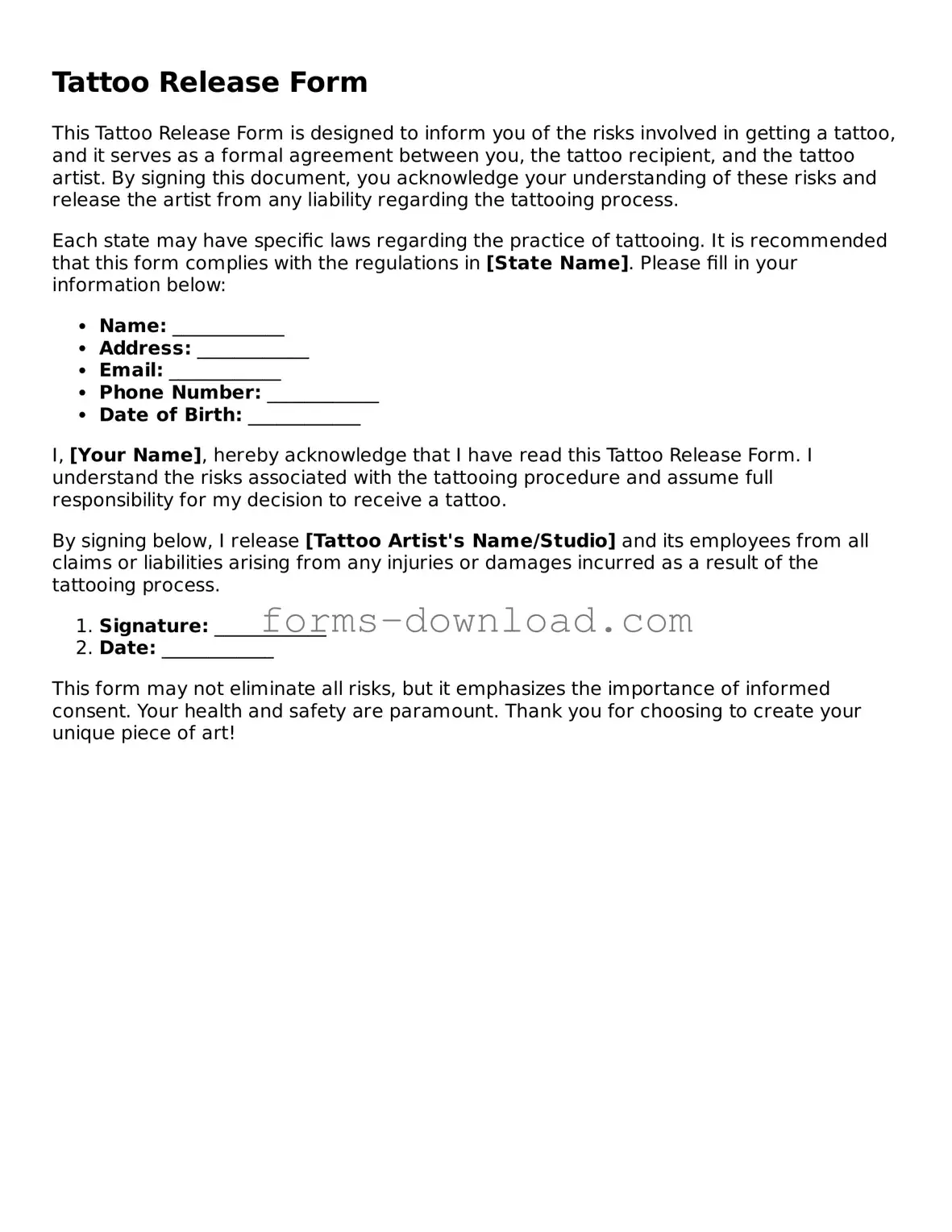Tattoo Release Form
This Tattoo Release Form is designed to inform you of the risks involved in getting a tattoo, and it serves as a formal agreement between you, the tattoo recipient, and the tattoo artist. By signing this document, you acknowledge your understanding of these risks and release the artist from any liability regarding the tattooing process.
Each state may have specific laws regarding the practice of tattooing. It is recommended that this form complies with the regulations in [State Name]. Please fill in your information below:
- Name: ____________
- Address: ____________
- Email: ____________
- Phone Number: ____________
- Date of Birth: ____________
I, [Your Name], hereby acknowledge that I have read this Tattoo Release Form. I understand the risks associated with the tattooing procedure and assume full responsibility for my decision to receive a tattoo.
By signing below, I release [Tattoo Artist's Name/Studio] and its employees from all claims or liabilities arising from any injuries or damages incurred as a result of the tattooing process.
- Signature: ____________
- Date: ____________
This form may not eliminate all risks, but it emphasizes the importance of informed consent. Your health and safety are paramount. Thank you for choosing to create your unique piece of art!
